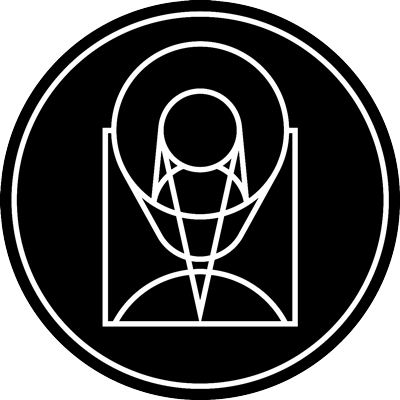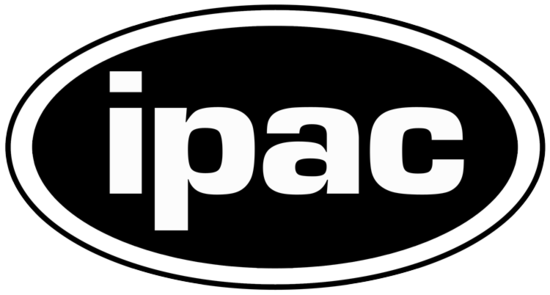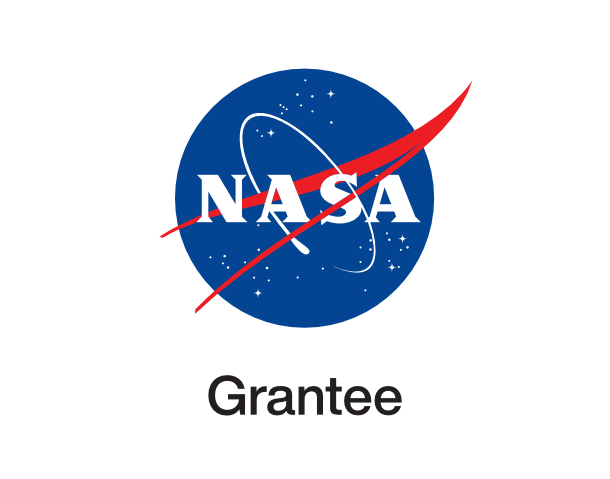Hubble Captures a "Five-Star" Rated Gravitational Lens

stsci_2006-23a May 23rd, 2006
Credit: ESA, NASA, K. Sharon (Tel Aviv University) and E. Ofek (Caltech)
NASA's Hubble Space Telescope has captured the first-ever picture of a group of five star-like images of a single distant quasar. The multiple-image effect seen in the Hubble picture is produced by a process called gravitational lensing, in which the gravitational field of a massive object - in this case, a cluster of galaxies - bends and amplifies light from an object - in this case, a quasar - farther behind it. Although many examples of gravitational lensing have been observed, this "quintuple quasar" is the only case so far in which multiple quasar images are produced by an entire galaxy cluster acting as a gravitational lens. The background quasar is the brilliant core of a galaxy. It is powered by a black hole, which is devouring gas and dust and creating a gusher of light in the process. When the quasar's light passes through the gravity field of the galaxy cluster that lies between us and the quasar, the light is bent by the space-warping gravity field in such a way that five separate images of the object are produced surrounding the cluster's center. The fifth quasar image is embedded to the right of the core of the central galaxy in the cluster. The cluster also creates a cobweb of images of other distant galaxies gravitationally lensed into arcs. The galaxy cluster creating the lens is known as SDSS J1004+4112 and was discovered in the Sloan Digital Sky Survey. It is one of the more distant clusters known (seven billion light-years away), and is seen as it appeared when the universe was half its present age. Spectral data taken with the Keck I 10-meter telescope show that these are images of the same galaxy. The spectral results match those inferred by a lens model based only on the image positions and measurements of the light emitted from the quasar. A gravitational lens will always produce an odd number of lensed images, but one image is usually very weak and embedded deep within the light of the lensing object itself. Though previous observations of SDSS J1004+4112 have revealed four of the images of this system, Hubble's sharp vision and the high magnification of this gravitational lens combine to place a fifth image far enough from the core of the central imaging galaxy to make it visible as well. The galaxy hosting the background quasar is at a distance of 10 billion light-years. The quasar host galaxy can be seen in the image as multiple faint red arcs. This is the most highly magnified quasar host galaxy ever seen. The Hubble picture also shows a large number of stretched arcs that are more distant galaxies lying behind the cluster, each of which is split into multiple distorted images. The most distant galaxy identified and confirmed so far is 12 billion light-years away (corresponding to only 1.8 billion years after the Big Bang). By comparing this image to a picture of the cluster obtained with Hubble a year earlier, the researchers discovered a rare event - a supernova exploding in one of the cluster galaxies. The supernova exploded seven billion years ago, and the data, together with other supernova observations, are being used to try to reconstruct how the universe was enriched by heavy elements through these explosions.
Provider: Space Telescope Science Institute
Image Source: https://hubblesite.org/contents/news-releases/2006/news-2006-23
Curator: STScI, Baltimore, MD, USA
Image Use Policy: http://hubblesite.org/copyright/

- ID
- 2006-23a
- Subject Category
- D.5.1.8 D.6.1.1 D.5.5.3 D.5.3.2
- Subject Name
- SDSS J1004+4112
- Credits
- ESA, NASA, K. Sharon (Tel Aviv University) and E. Ofek (Caltech)
- Release Date
- 2006-05-23T00:00:00
- Lightyears
- 7,000,000,000
- Redshift
- 7,000,000,000
- Reference Url
- https://hubblesite.org/contents/news-releases/2006/news-2006-23
- Type
- Observation
- Image Quality
- Good
- Distance Notes
- The distance to the galaxy cluster gravitational lens is roughly 7 billion light-years (2.1 Gigaparsecs). The distance to the quasar being lensed is roughly 10 billion light-years (3 Gigaparsecs). The distance to the farthest galaxy being lensed into an arc is 12 billion light-years (3.7 Gigaparsecs).
- Facility
- Hubble, Hubble, Hubble
- Instrument
- ACS, ACS, ACS
- Color Assignment
- Blue, Green, Red
- Band
- Optical, Optical, Optical
- Bandpass
- B, V, I
- Central Wavelength
- 435, 555, 814
- Start Time
- 2005-12-13T00:00:00, 2003-08-18T00:00:00, 2003-08-18T00:00:00
- Integration Time
- Dataset ID
- Notes
- A
- Coordinate Frame
- FK5
- Equinox
- 2000.0
- Reference Value
- 151.1467158760000018, 41.2043580765000002
- Reference Dimension
- 2316.0000000000000000, 1616.0000000000000000
- Reference Pixel
- 581.8505496980000089, 1084.0303497309998875
- Scale
- 0.0000138962762403, -0.0000138962762403
- Rotation
- 90.0196861389273124
- Coordinate System Projection:
- TAN
- Quality
- Full
- FITS Header
- Notes
- Creator (Curator)
- STScI
- URL
- http://hubblesite.org
- Name
- Space Telescope Science Institute Office of Public Outreach
- outreach@stsci.edu
- Telephone
- 410-338-4444
- Address
- 3700 San Martin Drive
- City
- Baltimore
- State/Province
- MD
- Postal Code
- 21218
- Country
- USA
- Rights
- http://hubblesite.org/copyright/
- Publisher
- STScI
- Publisher ID
- stsci
- Resource ID
- STSCI-H-p0623a-f-2316x1616.tif
- Resource URL
- https://mast.stsci.edu/api/latest/Download/file?uri=mast:OPO/product/STSCI-H-p0623a-f-2316x1616.tif
- Related Resources
- http://hubblesite.org/newscenter/archive/releases/2006/23
- Metadata Date
- 2022-07-06T00:00:00
- Metadata Version
- 1.2
Detailed color mapping information coming soon...















